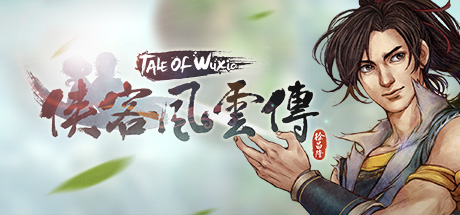Introduction
Few games capture the essence of a bygone era in gaming as effectively as Tale of Wuxia. Released on April 28, 2016, this role-playing, single-player PC game offered players a chance to carve their own destinies in a world of martial arts and ancient intrigue. Now, with a dose of nostalgia and thorough analysis, we explore the intricate layers that made this title resonate with hardcore enthusiasts and casual adventurers alike.
Historical Context and Legacy
At launch, Tale of Wuxia stood out by offering a truly player-defined platform. During a time when many RPGs limited customization to static skill trees and basic properties, this game broke the mold. It introduced a system where talents and personalities mattered as much as martial arts prowess. Developers were starting to push RPG boundaries, blending traditional mechanics with innovative features that left a mark on fans and future game design.
Storyline and World-Building
The narrative unfolds across richly detailed maps filled with interactive stories that mirror a dynamic, authentic Wuxia world. Multiple endings and hidden storylines—unlocked by specific conditions—expanded the narrative experience. Character interactions, including emotionally nuanced NPCs, added a depth to storytelling that elevated overall immersion.

Gameplay Mechanics and Customization
One of the most remarkable features in Tale of Wuxia was the game’s extensive character customization. Players could shape not only basic attributes but also personalities and unique talents. The talent system introduced roles such as diligent hard workers, adaptable slyboots, and charming jade trees. These roles affected gameplay, influencing mission choices and engagement style, which significantly boosted replayability and depth.
Visuals and Audio
While not top-tier graphically compared to modern blockbusters, the visuals were thoughtfully crafted to fit the historical setting. Authentic martial arts locations and detailed character models helped immerse players in the Wuxia ambiance. Likewise, the audio design—ranging from the thematic score to ambient sounds in temples and courtyards—enhanced the game’s retro charm.
Community Reception and Impact
Community feedback reveals valuable insights into the game’s strengths and quirks. Recent reviews score it as Very Positive (86% of 15 votes), with an overall rating of Mostly Positive (75% of 6,185 reviews). Fans appreciated the innovative design, despite a few shortcomings. Critics and players praised the customization and multiple narrative paths. Some noted occasional gameplay imbalance due to unique mechanics, but the game still earned a loyal following.

Additional Content and DLC
An enticing free DLC, “The Return of Devaraja”, further expanded the game’s universe. For many players, such additional content was a welcome bonus, offering fresh adventures that continued to explore the rich, multifaceted world of Wuxia, thus extending the game’s life and replayability.
Conclusion
Looking back, Tale of Wuxia is a strong example of a time when game design started focusing more on player freedom and creative ideas. Its detailed customization, fun story, and rich design left a mark that still shapes RPGs today. Even though the game doesn’t have an official score out of 10, the strong community reviews show it was a hit. As we reflect, it’s clear the developers gave their all to create more than just a game—it was a deep journey into a living world.

